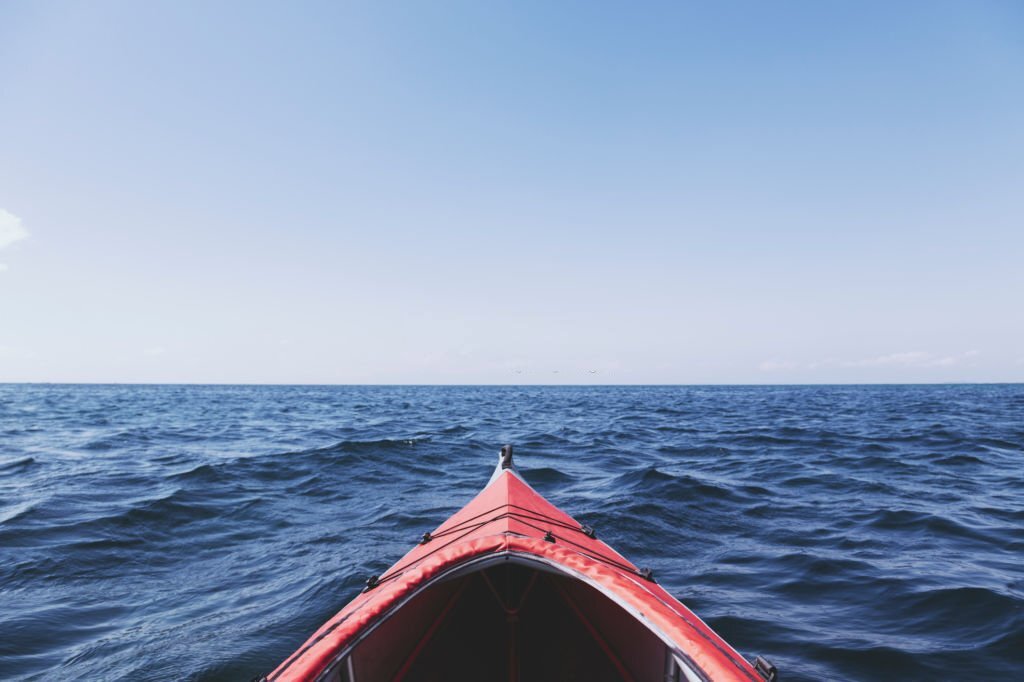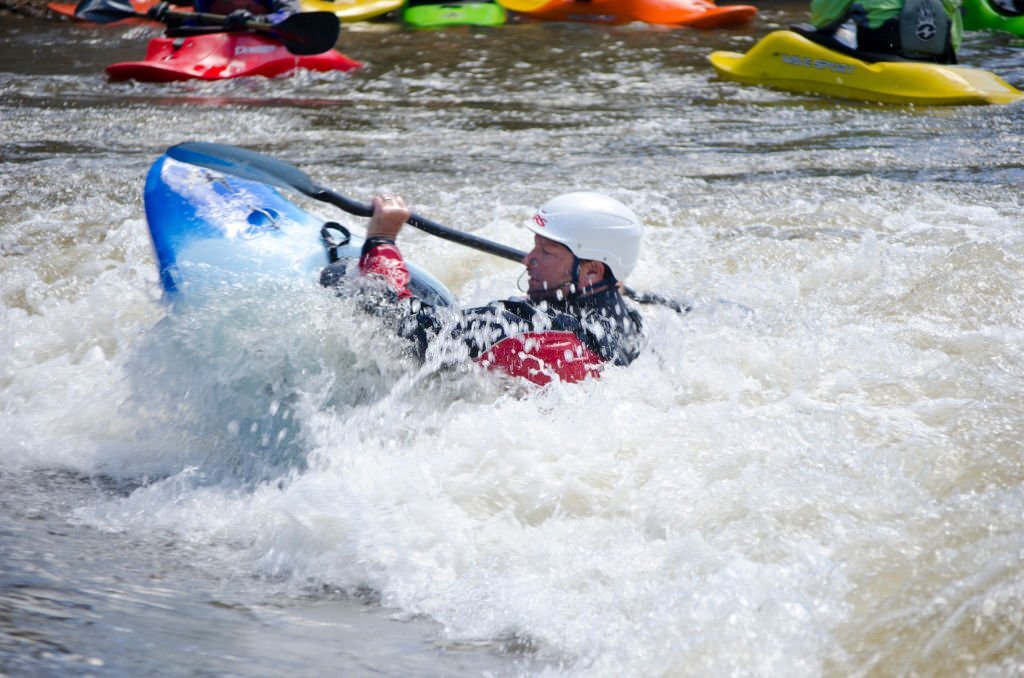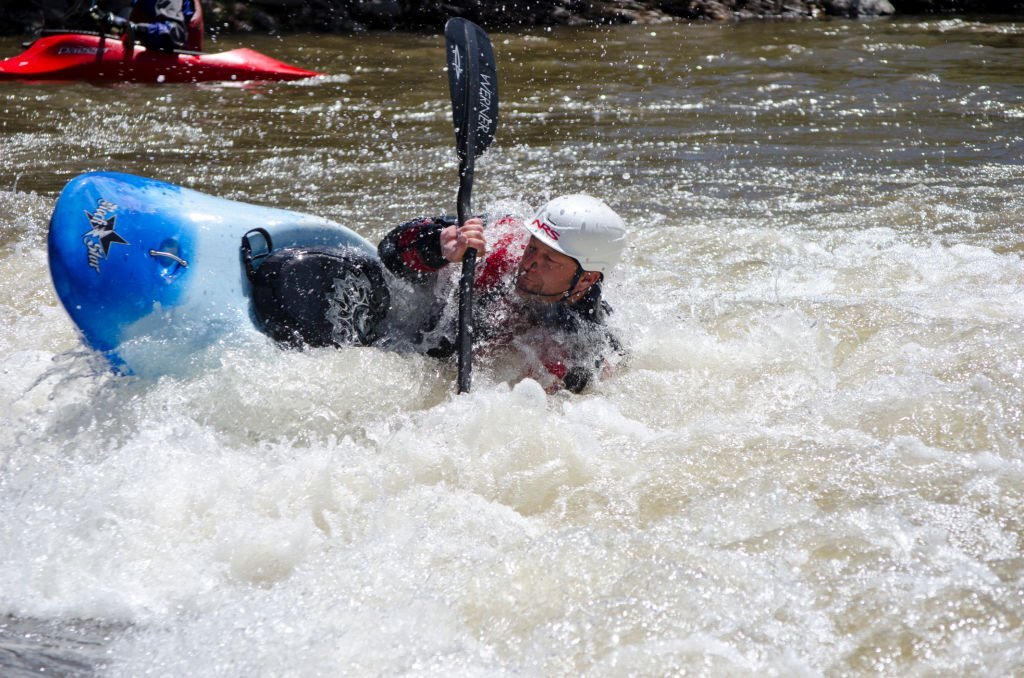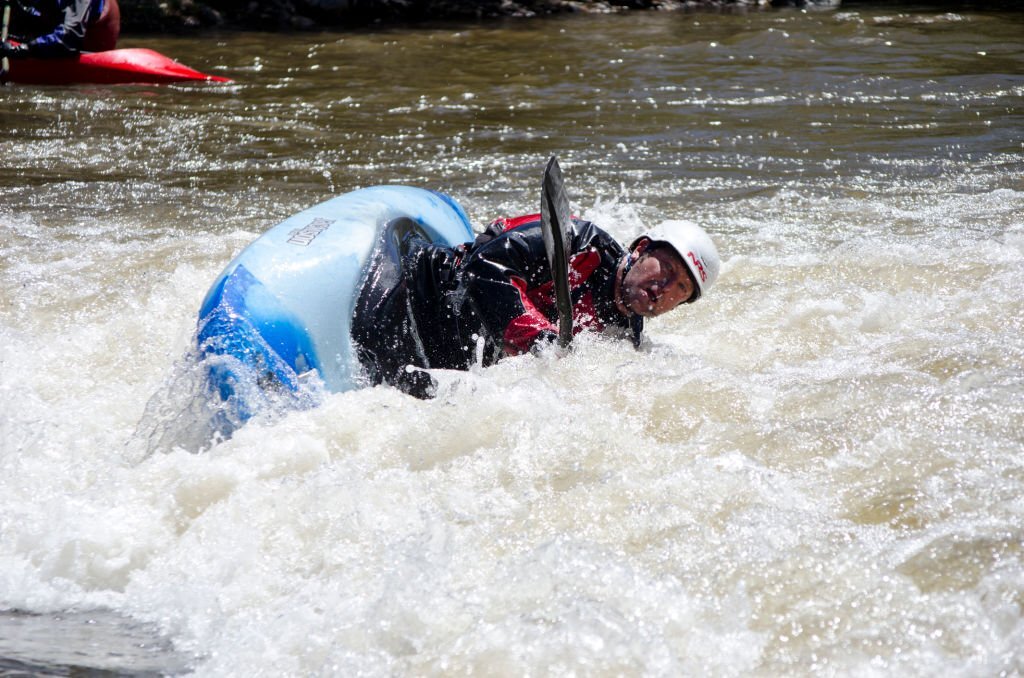Kayaking can be refreshing, but it can also become challenging and dangerous if you’re not careful. An important hurdle for newbies mastered stability and avoiding flipping it.
Staying afloat is essential for your safety and enjoyment, whether you’re paddling through rough waters or dealing with a strong current. This post will provide tips and tricks to help you improve your kayak stability and flipping skills.
We will provide you with all the necessary information to ensure your safety and comfort while you are out on the water, including tips on adjusting your posture and finding the right balance. Let’s begin by learning how to have an enjoyable and stress-free kayaking knowledge.
Table of Contents
1. The importance of kayak stability
Stability is crucial in kayaking. Learning kayak stability is important for both beginners and experienced paddlers. It ensures a safe and enjoyable experience on the water.
A stable kayak allows you to maneuver confidently, maintain balance, and avoid flipping over. Encountering rough waters or unexpected obstacles makes it particularly important to keep this in mind.
Stability is crucial for maintaining control of the kayak. Once you feel stable, you can shift your attention towards improving your stroke technique, navigating effectively, and fully immersing yourself in the beautiful scenery around you. Feeling wobbly or unsteady can be distracting and affect your paddling performance.

Safety is greatly influenced by stability. Using a stable kayak is important to minimize the chances of capsizing, which can be quite hazardous, particularly in deep or cold water. Using it gives you a feeling of safety and enables you to confidently navigate various water settings such as rivers, lakes, and oceans.
In addition, it is important to have kayak stability for activities like fishing, photography, or birdwatching. Remaining still for extended periods of time is often necessary during these activities. Using a stable kayak helps you maintain your position without constantly readjusting or feeling unbalanced.
Understanding and achieving kayak stability is a crucial skill that all paddlers should prioritize. Using this product will improve your ability to steer, stay safe, and have a more enjoyable time while kayaking. In the upcoming sections, we will discuss different techniques and tips to enhance your kayak stability. These methods will help you stay balanced and avoid capsizing.
2. Understanding the factors that affect kayak stability
To master the art of kayak stability, it is crucial to have a solid understanding of the factors that can affect it. By being aware of these factors, you can take proactive measures to prevent flipping and stay afloat while enjoying your kayaking adventures.
One of the primary factors that influences kayak stability is the width of the kayak. Generally, wider kayaks offer greater stability compared to narrower ones. This is because a wider kayak has a larger surface area in contact with the water, providing more stability and balance. So, if stability is a top priority for you, opting for a wider kayak would be a wise choice.
Another significant factor to consider is the center of gravity. Your center of gravity refers to the point around which your body’s mass is evenly distributed. When paddling a kayak, maintaining a low center of gravity is essential for stability. By keeping your body low and centered in the kayak, you create a more balanced and stable platform. This can be achieved by bending your knees slightly and ensuring that your body weight is evenly distributed.
Primary Stability vs Secondary Stability Explained
Understanding the difference between primary stability and secondary stability is important when thinking about stability. Primary stability refers to the initial stability of an object or structure. Primary stability in a boat or kayak is how stable it is when not moving or in calm conditions. A boat with good stability stays stable, which is great for beginners or people who like a steady ride.
Secondary stability is about how stable something is when it moves or faces forces like waves or wind. A boat with good stability stays steady when it leans or tilts. This gives you confidence and control, especially in rough conditions. Experienced boaters and those who go to difficult waters should be careful.
When picking a boat or kayak for various purposes, it is important to understand the distinction between primary and secondary stability. A boat that is stable in calm waters is good for recreational paddling or fishing. On the other hand, a kayaking or whitewater boat that is stable in dynamic conditions is better for sea kayaking or whitewater rafting.
When choosing a watercraft, it’s crucial to consider both primary and secondary stability. These factors have a direct impact on user safety and overall enjoyment. If you are new to paddling or experienced, consider how stable your equipment needs to be based on the activities you plan to do. This will help you have a pleasant and hassle-free experience on the water.
Factors Influencing a Kayak’s Stability Profile
When it comes to kayaking, one of the most important factors to consider is the stability of the kayak. The stability profile of a kayak is influenced by several key factors. Firstly, the width of the kayak plays a significant role.
A wider kayak will generally have a higher initial stability, as it has a larger surface area in contact with the water. However, this can also decrease the overall maneuverability of the kayak. On the other hand, a narrower kayak will have a lower initial stability but will be more responsive and agile in the water.
Another factor to consider is the shape of the hull. A flat-bottomed hull provides excellent initial stability, making it ideal for beginners or calm waters. In contrast, a rounded or V-shaped hull offers better secondary stability, making it more suitable for advanced paddlers and rougher conditions. Additionally, the length of the kayak can affect stability. A longer kayak tends to provide better tracking and a smoother ride, but may sacrifice a bit of stability.
Lastly, the weight distribution of the paddler and any additional gear can also impact the stability profile. It is crucial to distribute the weight evenly to maintain balance and stability. Overall, finding the right balance between stability and maneuverability is essential for a comfortable and enjoyable kayaking experience.
3. Choosing the right kayak for optimal stability
Choosing the right kayak is crucial when it comes to ensuring optimal stability on the water. There are various factors to consider that can greatly influence the stability of your kayak.
First and foremost, the width of the kayak plays a significant role in stability. Generally, wider kayaks tend to be more stable compared to narrower ones. A wider kayak provides a larger base, allowing for better balance and minimizing the risk of flipping. However, it’s important to strike a balance between stability and maneuverability, as excessively wide kayaks may sacrifice speed and agility.

Please also take into consideration the hull design of the kayak. Kayaks with flat hulls are a good choice for beginners or people who prefer calm waters because they provide increased initial stability. Kayaks with a V-shaped hull offer improved secondary stability, making them ideal for challenging conditions or rough waters.
Consider the length of the kayak as another important factor. Longer kayaks are known for their straight tracking and improved stability, particularly in open water. However, it is important to note that they might have difficulty navigating through tight spaces or narrow rivers. On the other hand, shorter kayaks offer increased agility and maneuverability, although they may compromise stability to some extent.
The stability of a kayak can be influenced by the materials used in its construction. Kayaks made from lightweight materials such as fiberglass or carbon fiber are more stable because they are stiffer and less likely to flex. However, it is important to note that these materials may come at a higher cost. Polyethylene kayaks are a cost-effective and long-lasting option. However, their flexibility may result in slightly reduced stability.
Please also take into account the weight capacity of the kayak. Make sure that the kayak is able to support your weight and any extra gear you plan to bring. Overloading the kayak can make it less stable and increase the chances of it flipping over.
To choose a kayak that provides excellent stability on the water, it’s important to consider factors such as width, hull design, length, construction materials, and weight capacity. To find the perfect kayak for your needs and skill level, it’s important to thoroughly research and test different options. This will help you achieve kayak stability and fully enjoy your paddling adventures.
4. Properly positioning yourself in the kayak for better stability
Maintaining stability on the water is crucial, and proper positioning in your kayak is key. Ensure that your weight is evenly distributed and centered in the kayak while you are seated. To maintain balance and distribute your weight evenly, it’s important to sit up straight with your feet comfortably resting on the footpegs or footrests.
To improve stability, remember to maintain a slight bend in your knees and engage your core. Establishing a strong connection between your upper body and the kayak is important for better control and balance. Engaging your core muscles helps you maintain stability and effectively respond to changes in the water or your environment.
Adjusting your seat is another important aspect of proper positioning. Kayaks typically come with adjustable seats, which is great because it allows you to easily find the best position that suits your body size and shape. To find the most comfortable seating arrangement, try adjusting the seat position, angles, and cushioning. It is important to prioritize comfort when seeking stability, so make sure to invest time in finding the perfect fit for your body.
It is important to understand the kayak’s center of gravity. To improve stability, it is important to maintain a low and centered weight. To prevent the kayak from tipping over, it is important to avoid leaning too far to one side. To maintain balance, evenly distribute your weight and keep your paddle in the water as a support tool for bracing or stability.
Finally, remember to practice correct body movements while paddling. To maintain stability, it is important to use smooth and controlled strokes. Avoid sudden or jerky movements as they can disrupt your balance. To maximize your performance and stability, focus on maintaining fluid and coordinated movements. Utilize your core and lower body to generate power effectively.
Improving your stability and reducing the risk of flipping can be achieved by mastering the art of positioning yourself in the kayak. It is important to prioritize safety and dedicate sufficient time to practice these techniques before attempting more difficult waters. By practicing and gaining experience, you will develop the necessary confidence and skills to comfortably navigate and fully appreciate the art of kayaking.
5. Mastering paddle strokes and techniques to maintain balance
To achieve kayak stability, it is essential to focus on mastering paddle strokes and techniques that help maintain balance on the water. A properly executed paddle stroke is essential for both forward propulsion and maintaining stability in your kayak, preventing any unexpected capsizing.
It is important to focus on maintaining a proper posture while paddling. Maintain proper posture by keeping your back straight, shoulders relaxed, and engaging your core muscles. Maintaining an upright posture helps distribute your weight evenly, which in turn improves stability. Using your core muscles allows you to generate power and enhance control over your movements.
It is important to consider the placement of your paddle in the water. The angle and depth at which you enter the paddle can significantly affect your stability. For optimal paddle placement, it is important to fully immerse the blade in the water and smoothly pull it back alongside the kayak using a controlled motion. By implementing this technique, you can achieve optimal propulsion efficiency without compromising the stability of your kayak.
Advanced Techniques for Stability
To enhance your balance and coordination, advanced techniques are essential for maintaining stability. Proprioception training is a technique that aims to enhance body awareness and coordination. You can improve your balance by doing exercises like single-leg balance exercises. These exercises involve standing on one leg and challenging yourself by closing your eyes or performing movements while balancing.
One effective technique to enhance your training routine is to include unstable surfaces, like a balance board or Bosu ball. Using these surfaces will make your muscles work harder to keep you stable, which will improve your balance and stability. To enhance your stability exercises, consider adding dynamic movements like lunges or squats on an unstable surface. This will increase the difficulty of the exercises and help strengthen the muscles that contribute to stability.
To improve your stability, it’s important to focus on strengthening your core. Exercises like planks, side planks, and Russian twists are great for this purpose. By including these advanced techniques in your training, you can improve your stability and boost your athletic performance.
Reading Water and Adaptation
Understanding aquatic environments involves two important concepts: reading water and adaptation. To read water effectively, you need to understand and interpret the various movements, patterns, and characteristics of water. This allows you to predict how it will behave and make well-informed decisions. Having this skill is essential for a range of activities including swimming, surfing, kayaking, and fishing.
Observing the flow, ripples, and currents helps identify hazards, locate safe areas, and determine the best course of action. Adaptation refers to the ability to adjust and respond to changing water conditions. Adaptability is crucial for thriving in various aquatic environments, as it enables individuals to adjust to factors such as temperature, waves, and underwater visibility.
Developing adaptability requires experience, practice, and a thorough understanding of water dynamics. To fully enjoy and explore aquatic environments, it is important to have both reading water and adaptation skills.
6. Using your body and core muscles to improve stability
When it comes to mastering the art of kayak stability, one of the key factors to consider is how you use your body and engage your core muscles. Proper body positioning and utilizing your core strength can significantly enhance your stability on the water and prevent flipping.
Firstly, it’s important to maintain a balanced and centered position in your kayak. Sit upright with your back straight and your weight evenly distributed between your hips. Avoid leaning too far forward or backward, as this can throw off your balance and make it easier to capsize.

Engaging your core muscles will help improve your stability. The core muscles, including the abdominals, lower back, and hips, play a crucial role in stabilizing your body. Engaging and strengthening these muscles will improve your movement control and enhance your balance.
To effectively engage your core while kayaking, it is important to focus on practicing proper paddling technique. To improve your strokes, it’s important to prioritize the use of your core muscles for initiation and power, rather than relying solely on your arms. Improving your stability and increasing your paddling efficiency are the benefits of this.
Practicing balance exercises on land can also contribute to developing core strength and stability. To enhance your stability in the kayak and strengthen your core muscles, consider incorporating exercises like planks, side planks, and Russian twists into your routine.
It’s important to keep in mind that becoming skilled at kayak stability takes time and effort. To prevent flipping and stay afloat in any water conditions, make sure to use your body and engage your core muscles.
7. Tips for maintaining a low center of gravity
To achieve kayak stability, it is important to maintain a low center of gravity. Proper body positioning and weight distribution are crucial for maintaining balance and reducing the risk of flipping over.
To ensure proper posture in your kayak, make sure to sit with your back straight and your feet securely positioned on the foot pegs or braces. Using this will assist you in achieving stability and enhancing your ability to control your movements effectively. To maintain your balance and prevent tipping over, it’s important to refrain from slouching or leaning back.
Next, make sure to distribute your weight evenly. Maintain a balanced body position and avoid excessive leaning to either side. Visualize yourself as the keel of the kayak, responsible for maintaining its stability and steadiness on the water. To maintain stability while paddling, it’s important to engage your core muscles instead of relying solely on your arms.
To maintain a low center of gravity, it is helpful to keep your knees slightly bent. Using this will help you maintain balance and control by absorbing sudden movements or waves. To improve your ability to react and stay stable, it’s important to keep your knees flexed and be ready to adjust to any changes in conditions.
Understanding the Importance of Low Center of Gravity
It is important to understand the significance of having a low center of gravity in different physical activities and daily tasks. Visualize a gymnast executing complex flips and tricks with precision on a balance beam. Maintaining balance and control throughout their routine would be a struggle for the gymnast without a low center of gravity.
In activities like skiing, having a lower center of gravity is important for maintaining stability and navigating the slopes effectively. Having a lower center of gravity in everyday life can help prevent accidents and injuries. Having a low center of gravity while walking on uneven surfaces or climbing stairs helps to maintain a stable base and improve balance, which ultimately lowers the chances of tripping or falling.
To minimize the risk of injury and reduce strain on your back, it is important to maintain a lower center of gravity when lifting heavy objects. This helps distribute the weight evenly. Grasping the concept of maintaining a low center of gravity is essential for improving performance and safety in physical activities.
8. How to handle rough waters and challenging conditions
Rough seas and difficult circumstances are inherent while kayaking. To remain afloat in turbulent seas, strong currents, or unexpected weather, you must be confident and skilled.
First, keep cool and collected. Panicking may impair decision-making and increase capsizing risk. Clear your thoughts and concentrate on kayak control.
Adjusting your paddling technique might help in difficult conditions. Use shorter, more forceful strokes instead of long, sweeping ones. This will help you manage waves and currents more effectively and stabilize.
Additionally, alter your body posture. Leaning forward lowers your center of gravity and prevents tipping. Maintain core engagement and body center over the kayak.
Holding the paddle tightly is essential in difficult situations. Use a strong grip and attach your hands to the paddle shaft. This improves control and prevents paddle slippage.
You should also anticipate waves and change your kayak’s attitude. To reduce impact and preserve stability, face the waves at a modest angle. This technique, called “bracing,” uses your paddle to offset wave power.
Finally, a PFD is required. A PFD may save your life under difficult circumstances by providing buoyancy and safety.
Remember that kayak stability in turbulent waves requires practice. Before testing yourself in harsh situations, start slowly in controlled surroundings. With patience and the appropriate approaches, you’ll learn to traverse difficult seas with confidence and elegance.
9. Practicing kayak stability exercises and drills
To learn kayak stability, you must practice workouts and drills. These workouts boost balance, control, and confidence on the water, helping you avoid flipping and remain afloat in tough circumstances.
Essential stability exercise is the hip flick. Sit in your kayak with your legs out in front. Start by slowly leaning to one side using your core. Lift your opposing hip off the seat to tilt your kayak as you lean. Practice this movement on both sides, concentrating on balance and control.
Another stability exercise is the sculling brace. Place your kayak sideways in the water with the paddle parallel to the surface. Support yourself with one hand on the paddle shaft and one on the kayak edge. Use your lower hand to gently scull the paddle back and forth to stay balanced. Challenge yourself by gradually increasing sculling speed and effort.
Adding the low brace to your practice regimen may also boost stability. Start paddling at a reasonable pace, then immediately lean to one side and place your paddle flat on the water. To avoid kayak tipping, push down on the paddle to establish a platform. Repeat this exercise on both sides, progressively increasing your lean angle for a harder workout.
Finally, kayak stability requires edging practice. Edging is tilting your kayak by changing your weight and dropping the other knee into the water. This approach stabilizes you in turns or turbulent waves. Practice edging in a controlled setting and increase difficulty as you develop.
Practice and patience are needed to master kayak stability. Incorporate these workouts and drills during your regular training to improve balance, control, and water confidence. Time and determination will help you avoid flipping, remain afloat, and enjoy kayaking.
10. Safety tips and precautions to prevent flipping and stay afloat
When it comes to kayaking, safety should always be a top priority. No matter your skill level or experience, accidents can happen, and it’s important to take the necessary precautions to prevent flipping and stay afloat. Here are some essential safety tips to keep in mind before hitting the water.
1. Wear a Personal Flotation Device (PFD): A PFD is a must-have safety gear for every kayaker. It provides buoyancy and ensures that you stay afloat in case of an unexpected flip. Choose a PFD that fits properly and is designed for water activities.
2. Know your limits: Before venturing out, assess your skill level and choose a kayaking route that matches your abilities. Avoid rushing into challenging waters without adequate experience or training. Start with calm and stable waters and gradually progress to more challenging conditions.
3. Practice proper paddling technique: Correct paddling technique can greatly improve your stability on the water. Maintain a relaxed grip on the paddle, use your core muscles for power, and focus on maintaining a balanced and even stroke. This will help you maintain stability and reduce the risk of tipping over.
4. Balance your weight: Proper weight distribution is crucial to maintaining kayak stability. Keep your weight centered and evenly distributed between the two sides of the kayak. Avoid sudden movements or leaning too far to one side, as this can easily lead to flipping.
5. Be aware of weather and water conditions: Check the weather forecast and water conditions before heading out. Strong winds, currents, or waves can increase the likelihood of capsizing. If conditions are unfavorable or beyond your comfort level, it’s best to postpone your kayaking trip.
6. Learn how to re-enter the kayak: Even with all precautions, accidents can still happen. Therefore, it’s important to know how to re-enter your kayak in case you do flip. Practice self-rescue techniques such as the “wet exit” and “re-entry and roll” with the help of a qualified instructor.
7. Go kayaking with a buddy: Kayaking with a partner not only adds an element of fun but also provides an extra layer of safety. In case of an emergency or flip, having someone nearby can offer assistance and support.
By following these safety tips and taking necessary precautions, you can minimize the risk of flipping and ensure a safe and enjoyable kayaking experience. Remember, mastering the art of kayak stability takes practice, so don’t hesitate to seek guidance from experienced kayakers or instructors to improve your skills on the water.
We hope you found our article on mastering the art of kayak stability helpful. By following the tips and techniques we shared, you can improve your balance, prevent flipping, and stay afloat with confidence.
